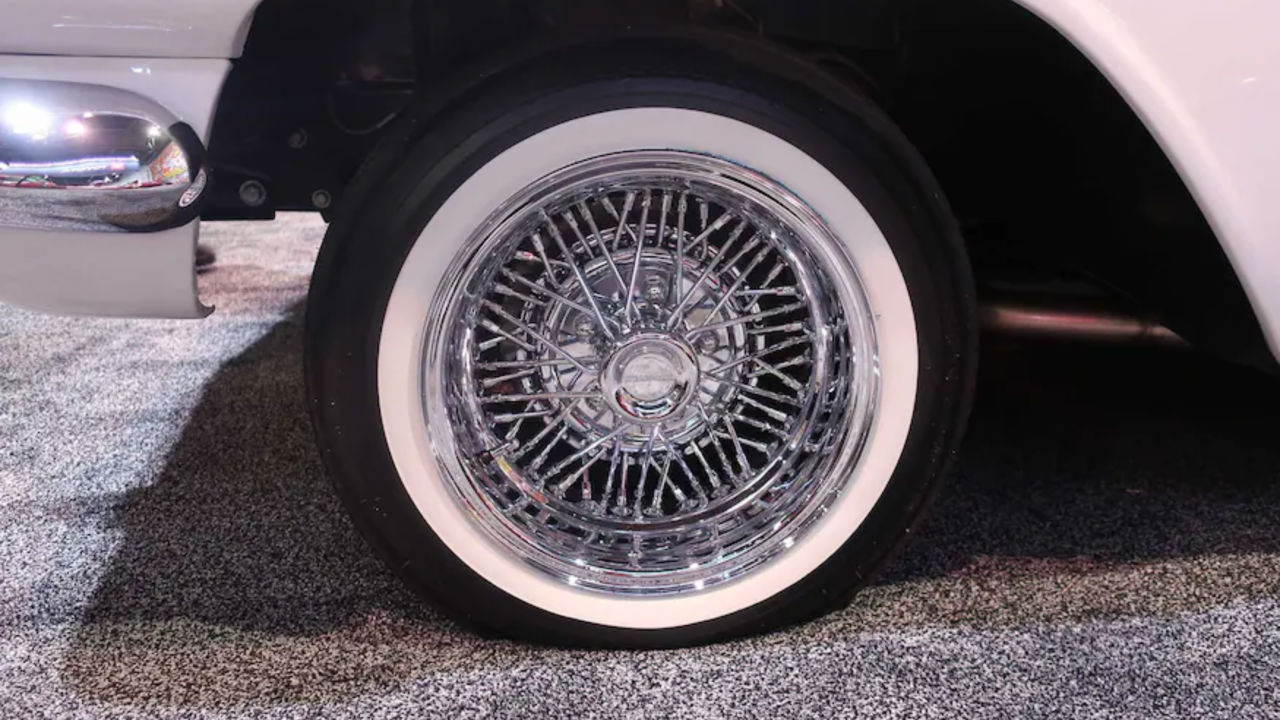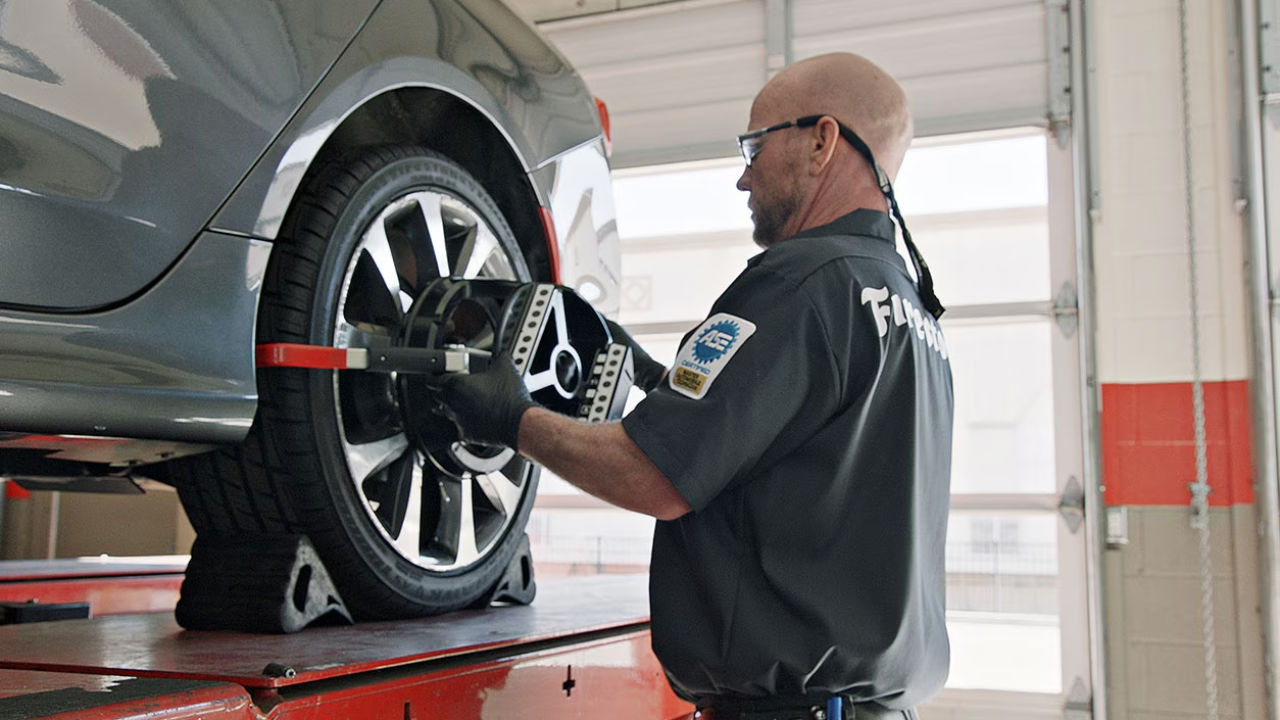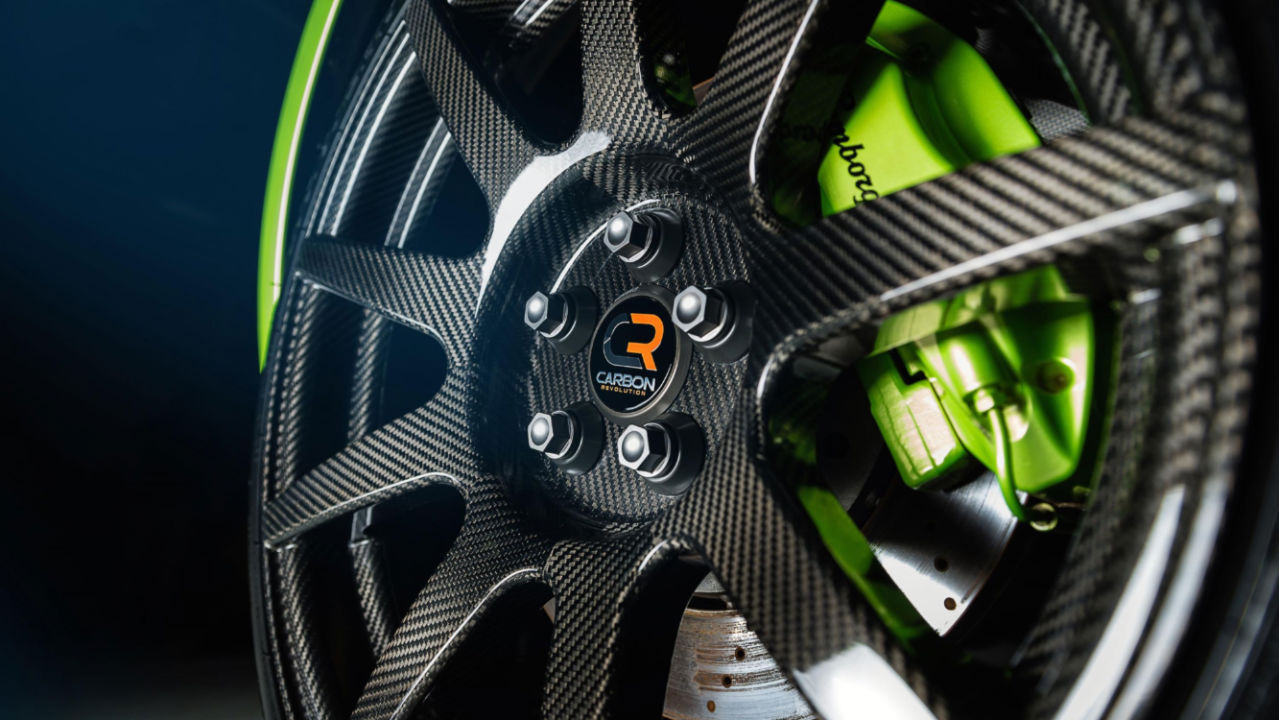In the ever-evolving realm of automotive technology, if there is one thing that most likely won’t be reinvented is the wheel of a car. At least that is what we think for now. However, as the technology advances, we could see a major change in the wheels of the car. In this week’s edition of a detailed guide to automotive terms, we look at car wheels.
We will discuss the history, types of wheels, materials used and manufacturing process involved in the wheels of a car. Before we jump on to today’s topic, here is a beginner’s guide to car terms making you confident in speaking about cars.

History Of Car Wheels
In the late 1800s, motorcar wheels were meticulously fashioned from wood, marking a pivotal stage in the evolution of automotive technology. These spoked marvels, often coupled with solid rubber tyres, laid the groundwork for the automotive revolution that would unfold. As the world transitioned into the 1920s, wire-spoke wheels emerged, seamlessly blending aesthetics with practicality. This era epitomised a delicate equilibrium between form and function in the realm of wheel design.
Later, cars shifted to solid steel disc wheels, replacing wooden ones and showing a focus on durability. Now, alloy wheels, made from lightweight metals like aluminium, are prevalent, reducing vehicle weight and improving performance. This breakthrough in wheel technology has become the global standard, marking ongoing advancement in automotive engineering.

Different Types Of Car Wheels
Spoke Wheels:
Spoke wheels harken back to a bygone era. Whether made of steel or alloy, their timeless design adds a classic touch to both vintage and modern cars. Spokes can vary in number, offering a range of aesthetic possibilities.
Steel Wheels:
Steel wheels are the workhorses of the wheel world. Known for their durability and strength, these wheels are often the standard issue on many vehicles. While they may lack the flair of other types, they are reliable and cost-effective.
Alloy Wheels:
Alloy wheels, made from a mix of metals like aluminium or magnesium, offer a winning combination of strength and lightness. Besides enhancing performance and fuel efficiency, these wheels come in a range of sleek designs, adding a touch of elegance to the ride.

Forged Wheels:
Forged wheels are crafted through a high-pressure process that results in a stronger and lighter wheel. Common in high-performance and sports cars, these wheels are prized for their precision engineering and enhanced strength.
Off-Road Wheels:
Designed for rough terrains, off-road wheels often feature robust construction, reinforced rims, and larger sizes. These wheels are essential for vehicles that venture beyond the well-paved roads, offering both style and functionality.
Carbon Fibre Wheels:
In the pursuit of high performance, some manufacturers turn to carbon fibre for wheel construction. Renowned for its strength-to-weight ratio, carbon fibre wheels significantly reduce unsprung weight, improving handling and overall driving dynamics. These wheels are often found on high-end sports cars and supercars.
Chrome Wheels:
Chrome wheels are all about making a bold statement. Coated in chrome for a mirror-like finish, these wheels not only catch the eye but also resist corrosion. Often chosen for their flashy appearance, they are a popular choice for those looking to stand out.

Spinner Wheels:
Adding an element of flair, spinner wheels have a rotating hubcap that continues to spin even when the car is stationary. While more of a niche choice, they are a testament to the creativity and personalization available in the world of car wheels.

Car Wheels Materials
Steel:
- Advantages: Durable and cost-effective, steel wheels are easy to repair.
- Disadvantages: Heavier than alternatives, they lack the aesthetic appeal of alloy or custom wheels.
Aluminium Alloy:
- Advantages: Lightweight and visually appealing, alloy wheels dissipate heat effectively.
- Disadvantages: More expensive than steel, susceptible to damage.

Carbon Fibre:
- Advantages: Ultra-lightweight and strong, carbon fibre wheels enhance overall performance.
- Disadvantages: Costly and challenging to repair.
Forged Aluminium:
- Advantages: Strong and lightweight, forged wheels offer precise engineering.
- Disadvantages: Higher cost and limited availability.
Magnesium:
- Advantages: Extremely lightweight, magnesium wheels improve handling and acceleration.
- Disadvantages: Expensive and susceptible to corrosion.

How Is A Car Wheel Manufactured?
Material Selection:
The process begins with the selection of materials. Common materials include steel, aluminium alloy, or, in some cases, advanced materials like carbon fibre or magnesium.
Wheel Casting:
For wheels made from metals like aluminium, the casting process is often employed. In this stage, molten metal is poured into a mould that reflects the desired wheel design. Once the metal solidifies, the wheel takes shape. Cast wheels are commonly used for their cost-effectiveness and versatility in design.
Forging:
In the case of forged wheels, a forging process is utilized. This involves subjecting a metal billet to high pressure, resulting in a wheel that is both stronger and lighter than its cast counterpart. Forged wheels are often preferred for high-performance applications.

Machining:
After casting or forging, the wheel undergoes machining to achieve the precise dimensions and finish. Computer Numerical Control (CNC) machines are commonly used for this step, ensuring accuracy and consistency in the final product.
Heat Treatment:
To enhance the mechanical properties of the wheel, heat treatment may be applied. This process involves heating the wheel to a specific temperature and then cooling it gradually. Heat treatment improves strength, hardness, and durability.
Painting
The visual appeal of the wheel is enhanced through painting or coating. Powder coating is a popular choice as it provides a durable and aesthetically pleasing finish. Chrome plating is another option, adding a reflective layer for a shiny appearance.
Quality Control:
Rigorous quality control measures are implemented throughout the manufacturing process. This includes inspections for dimensional accuracy, structural integrity, and surface finish. Any defects are addressed before the wheel moves on to the next stage.

Wheel Balancing & Wheel Alignment
Wheel Balancing:
Wheel balancing ensures even weight distribution around each tire and wheel assembly, preventing vibrations and uneven wear. Technicians use a balancing machine to identify imbalances and add counterweights as needed, promoting a smoother ride and extended tire life.
Wheel Alignment:
The wheel alignment adjusts the angles of the wheels to maintain perpendicularity to the ground and parallel alignment. This procedure, addressing camber, caster, and toe angles, enhances vehicle stability, steering responsiveness, and tire longevity. Regular alignment checks are essential for optimal performance and safety on the road.

Future Of Car Wheels
- Smart Wheels: Integration of sensors for real-time data on tire conditions and road dynamics.
- 3D-Printed Wheels: Revolutionizing production with intricate designs, customization, and potential for stronger, lighter wheels.
- Shape-Shifting Wheels: Innovative materials and designs might lead to wheels that can adapt their shape based on driving conditions.
- Energy-Harvesting Wheels: Wheels equipped with energy-capturing technologies, such as regenerative braking systems, could generate and store power during driving.
- Customizable Aesthetics: Advances in materials and manufacturing techniques could allow for highly customizable wheel designs, catering to individual preferences.

- Environmental Sustainability: Integration of eco-friendly materials and processes.
- Autonomous Vehicles: These wheels may be designed to integrate seamlessly with these systems, potentially incorporating technology for improved communication and coordination.
- Augmented Reality (AR) Integration: Incorporating augmented reality for real-time information on road conditions and diagnostics.
- Self-Healing Materials: Wheels made from self-healing materials could automatically repair minor damages, reducing the need for frequent replacements and maintenance.
That is our complete and detailed guide to car wheels. Like the guide? We have more of them posted on our blog with in-depth information on automotive terms. We will be posting detailed blogs on other components of a car. Keep an eye out for more such guides on the DubiCars Blog.
Looking to buy a car? Here are used cars for sale in the UAE and new cars for sale in the UAE.
Other Automotive Guides:






